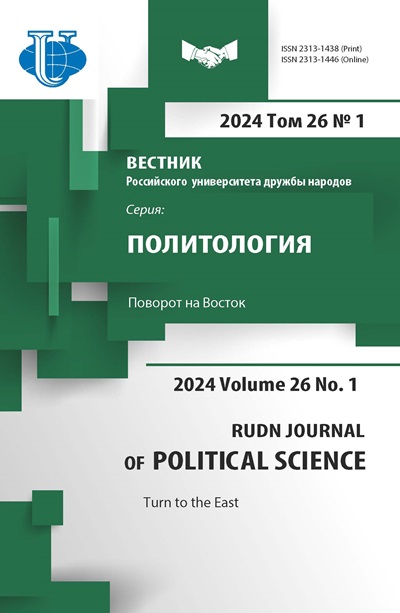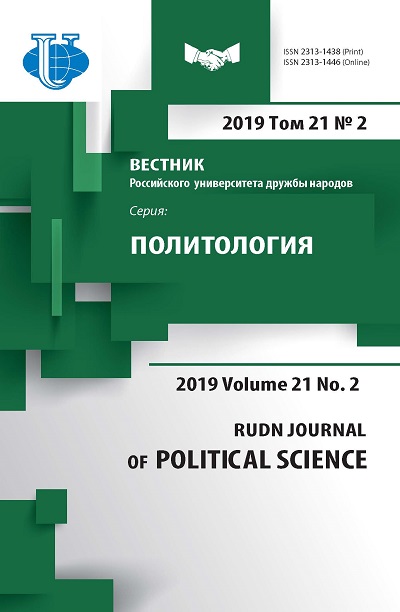REALITIES OF THE MIGRATION PROCESS IN RUSSIA: QUANTITATIVE “PROS” AND QUALITATIVE “CONS”
- Authors: Karadje T.V1, Tombu D.V1
-
Affiliations:
- Moscow Pedagogical State University
- Issue: Vol 21, No 2 (2019)
- Pages: 175-183
- Section: POLITICAL PROCESS IN CONTEMPORARY RUSSIA: TENDENCIES AND PROSPECTS
- URL: https://journals.rudn.ru/political-science/article/view/21836
- DOI: https://doi.org/10.22363/2313-1438-2019-21-2-175-183
Cite item
Full Text
Abstract
The article discusses the features of immigration and emigration flows in Russia, their quality indicators. There is a mismatch in the distribution of labor migrants in the country regions, as well as the intellectual and professional characteristics of immigration and emigration flows are being analyzed. The authors pay great attention to the main modern trends of migration processes in Russia and problems of migration’s regulation.
About the authors
Tatiana V Karadje
Moscow Pedagogical State University
Author for correspondence.
Email: karadzhe@yandex.ru
Doctor of Political Science, Full Professor and Head of the Department of Political Science, Moscow State Pedagogical University
Moscow, Russian FederationDina V Tombu
Moscow Pedagogical State University
Email: dv.tombu@mpgu.su
PhD, Associate Professor of the Department of Political Science, Moscow State Pedagogical University
Moscow, Russian FederationReferences
- In the Russian Academy of Science it Was Declared that the “Brain Drain” Doubled in Three Recent Years. RBC. 29.03.2018. Available from: https://www.rbc.ru/society/29/03/2018/ 5abcc9f59a7947e576977387. Accessed: 03.03.2019 (In Russ.)
- Vorobyeva O.D., Grebenyuk A.A. Emigration from Russia as Per Data of the National Statistical Review. Statistical Issues. 2017; 1 (11): 44—53. (In Russ.)
- Kulikova Yu.O. Migration Problems in Countries of Europe. The Young Scientist. 2017; 12: 417—420 (In Russ.).
- Levada Center: Only 6% of Russian Citizens Support Foreigners’ Labor Migration to Russian Federation. Levada Center. 29.08.2017. Available from: https://mresearcher.com/2017/08/ levada-tsentr-tolko-6-rossiyan-podderzhivayut-trudovuyu-migratsiyu-v-rf-inorodtsev.html. Accessed: 03.03.2019 (In Russ.).
- Migrants — New Population of Russian Federation, or the National Security Threat? Ridius. 16.03.2016. Available from: https://www.ridus.ru/news/215351. Accessed: 03.03.2019 (In Russ.).
- Monitoring of Social-economic Well-being of Russians. Institute of Social Analysis and Forecast. RANEPA. 2015—2019. Available from: https://www.ranepa.ru/social/informatsionnoanaliticheskij-byulleten. Accessed: 03.03.2019 (In Russ.).
- Okladnikova E.A. Ethnic Tolerance Limits: Labor Migration, Education and Transformation of Modern Russian Society. Works of the Saint-Petersburg Institute of Culture and Arts. 2015: 374—383 (In Russ.).
- Main Results of Work of the Labor and Social Protection Ministry of Russian Federation in 2016. Available from: http://government.ru/dep_news/27318. Accessed: 03.03.2019 (In Russ.).
- Government Decree of Russian Federation Dated on the 6th of December 2017 № 1479 “On the Definition of the Need to Attract Foreign Workers, Arriving to Russian Federation, Based on the Visa, Including the Priority of Professional and Qualification Groups, and the Statement of the Quotes for 2018 year”. Official Website of the Government of Russian Federation. Available from: http://government.ru/docs/30455/. Accessed: 03.03.2019 (In Russ.).
- Tsymbalyuk V.A. Factors, Influencing the Migration Policy of Russia Towards Foreign Workers. The Young Scientist. 2017; 13: 511—513 (In Russ.).
















